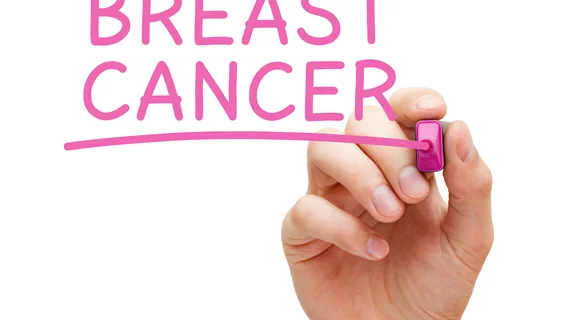New imaging technique helps researchers reduce unnecessary breast biopsies by 36%
Combining radiomics with a new technique called three-compartment breast (3CB) imaging may help reduce unnecessary breast biopsies, according to a new study published in Radiology.
"The callback rate with mammography is much higher than ideal," lead author Karen Drukker, PhD, of the University of Chicago, said in a prepared statement. "There are costs and anxiety associated with recalls, and our goal is to reduce these costs but not miss anything that should be biopsied."
3CB image analysis measures a breast's water, lipid and protein tissue composition, providing specialists with valuable information about the patient. Increased water in the tumor tissue, for example, may indicate angiogenesis—an early sign of cancer development.
For their research, the team first acquired 109 dual-energy mammograms from women with masses that were "suspicious or highly suggestive of a malignancy" immediately before the biopsies took place. The biopsies revealed that 35 masses were invasive cancers and 74 were benign.
The researchers then used 3CB image analysis and radiomics and found that the combination led to improved positive predictive values (PPVs) in masses that were dubbed suspicious by a radiologist. Specifically, the 3CB-radiomics combination showed:
- A PPV of 50 percent compared to 32 percent from visual interpretation.
- A 36-percent reduction in biopsies.
- A 97-percent sensitivity rate.
Calling the results “promising” and the reduction in recalls “substantial,” Drukker added that this 3CB-radiomics approach could potentially have a prominent role in breast cancer diagnosis.
Additionally, she said, 3CB can be added to existing mammography without requiring “extensive modifications to existing equipment." However, there would be an added 10 percent dose of radiation.
Still in its experimental stage, Drukker said further work is needed to make it available to patients. The researchers, for example, still seek to better understand the impact of the 3CB-radiomics method on digital breast tomosynthesis.

